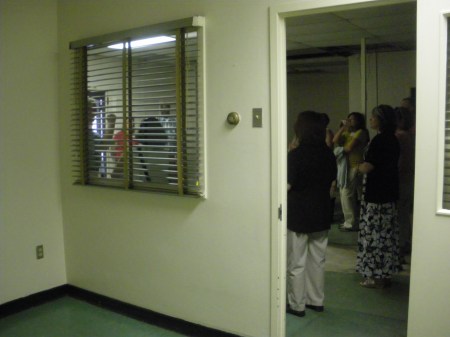Save Our Schools and other teacher groups organized a march on Washington, a four-day affair to get attention to problems in schools and gain support for education-favorable solutions.
Will their voices be heard over the debt ceiling hostage crisis? Is it more than coincidence that many of the politicians attacking education lead the effort to ruin the nation’s credit and sink our economy?
Here’s an explanation from EDWeek’s Politics K-12 blog:
Teachers Converging on Washington for 4-Day Schools Rally
By Michele McNeil on July 28, 2011 5:54 AM
By guest blogger Nirvi Shah
UPDATED
Today kicks off the four-day Save Our Schools March and National Call to Action, a gathering and rally in Washington, D.C., organized by teachers who say they are fed up with test-driven accountability for public schools—and, increasingly, for teachers.
The group, which maintains that it is a grassroots, from-the-ground-up organization, hopes to send a message to national and state policymakers about their displeasure, as well as highlight a variety of principles for improving public education. The group has developed a series of position papers outlining its views on high-stakes testing, equitable funding for all schools, unions and collective bargaining, and changes to curriculum, among other issues. For the most part, the position papers aren’t yet at the level of detail of formal policy prescriptions, and it remains to be seen whether such proposals will emerge from the gathering.
March organizer Sabrina Stevens Shupe said however that policy proposals aren’t necessarily the goal of the events. “What we’re talking about is creating the right conditions, not prescriptive policies,” she said. “There’s no one silver bullet that’s going to save anything,” she added, referring to attempts to craft education reforms for the last 30 years.
“There’s no one silver bullet that’s going to save anything,” she added, referring to attempts to craft education reforms for the last 30 years.
The big event happens Saturday, when thousands of teachers and supporters of the cause are expected to rally and march at The Ellipse, near the White House. (About 1,000 people have indicated they’ll attend via the movement’s website, but registration is not required, and organizers believe 5,000 to 10,000 marchers will turn out.) The group will wrap up with a closed-door meeting Sunday at which participants will try to determine how to keep the momentum from the rally going. (Movement organizers haven’t disclosed the meeting’s location, and it is not open to press.)
Watch this blog and our issues page for developments from the movement’s events today and through the weekend.
The movement began with a small group of teachers, including Jesse Turner, who walked from Connecticut to the District of Columbia last August to protest the No Child Left Behind Act and Race to the Top. Their efforts predated actions by state legislatures across the country this spring to curb teachers’ collective bargaining powers and tenure, noted Bess Altwerger, a member of the movement’s organizing committee, who hosted a reception for Mr. Turner last summer. She said the shortcomings of the American public education system do not lie with teachers.
“This has been framed as somebody’s fault—either the parents’ fault or the teachers’ fault,” Ms. Altwerger said. “The fault lies with an education policy that does not work.”
Eventually, both of the nation’s largest teachers unions threw their financial and philosophical support behind the movement.
The American Federation of Teachers and National Education Association have donated about $25,000 each to the effort. The bulk of the rest of the donations have come from one-time gifts provided through the Save Our Schools website. Conference organizers estimated that they’d raised over $125,000. After this weekend, they will have to begin fundraising efforts anew to keep their work going.
Taking Message to Obama Administration
Three organizers of the SOS March met Wednesday for an hour with senior-level Education Department officials, including two press officers and the deputy chief of staff. U.S. Secretary of Education Arne Duncan was in attendance for about 10 minutes, and described the meeting as a “good conversation.” He added that “there is a lot of common ground out there.”
(Read the rest of the story from Politics K-12.)
With some luck, a few thousand teachers will show up. With greater luck, a few thousand other people, concerned parents, perhaps, will join them.
In much of the nation teachers are still stuck fighting for jobs. Here in Texas, for example, the Texas Lege didn’t get a budget out until June, including dramatically slashed funding for this coming school year. In some Texas districts we still face layoffs before school starts in just over two weeks. Many of us don’t have clear assignments, and many more of us will lose basics of teaching, like preparation time, breaks, classrooms, paper, books, and pencils.
Considering the trouble created by political attacks on education in state legislatures this year, much of the attacks wholly unnecessary, it’s a wonder the teachers don’t show up with pitchforks, torches, and tar and feathers.
It’s a crazy world out there. Help make some sense somewhere, will you?
Spread the word; friends don't allow friends to repeat history.



 Posted by Ed Darrell
Posted by Ed Darrell 









